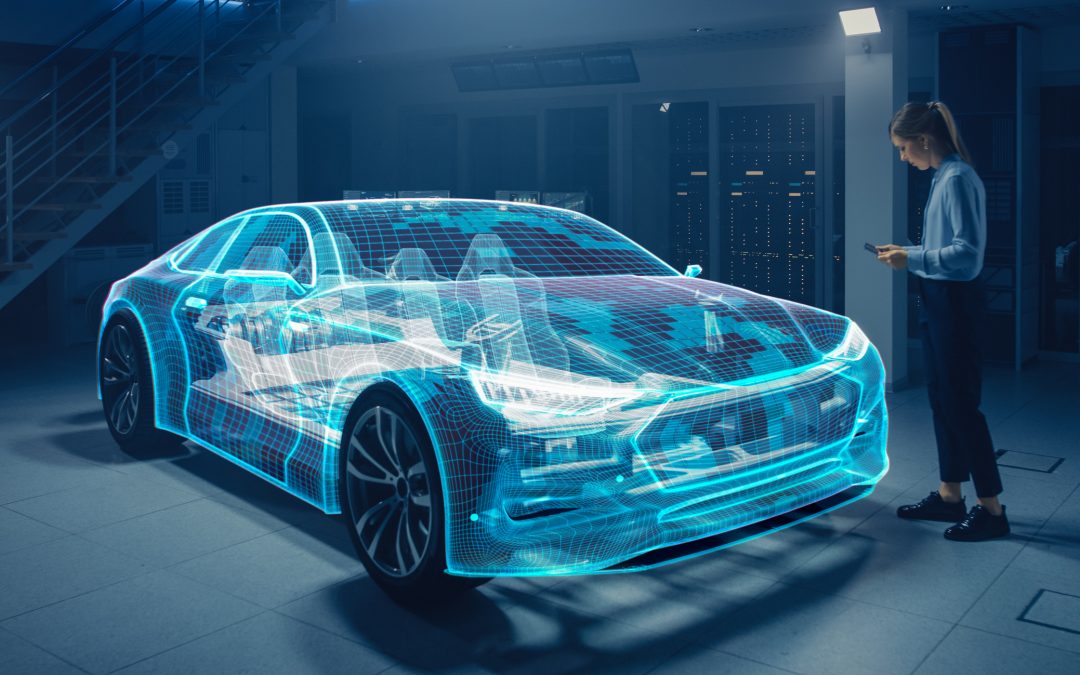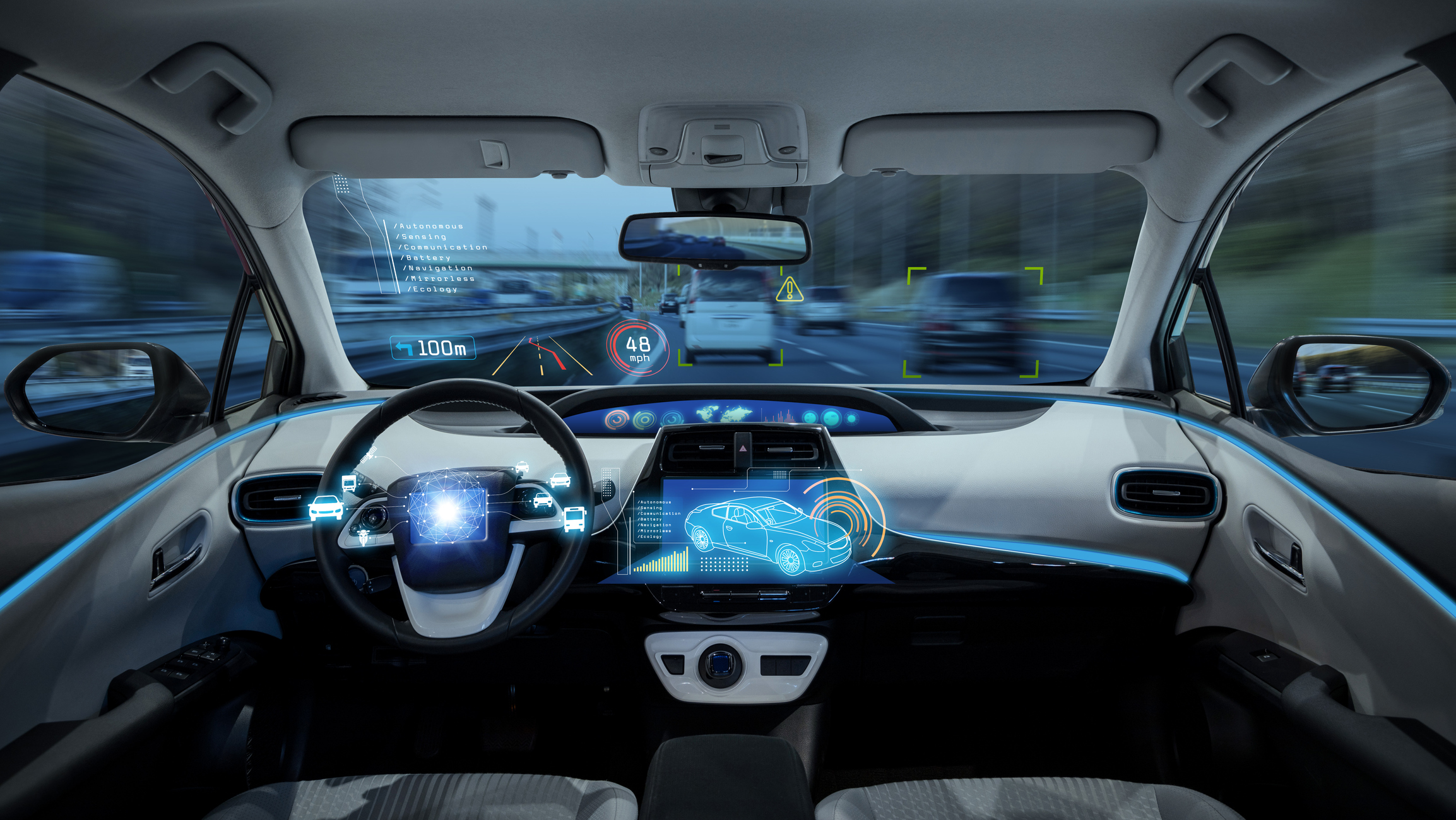An automotive Human-Machine Interface (HMI) is the system that facilitates the interaction between humans (drivers and passengers) and the various components and functions of a vehicle (machine). It encompasses the technologies, interfaces, and controls that allow users to communicate with and control the vehicle’s features. The goal of automotive HMI is to provide an intuitive, user-friendly experience while ensuring that drivers can maintain their focus on the road.
These can include:
- Dashboard Displays
- Touchscreens
- Voice Recognition
- Steering Wheel Controls
- Gesture Control
- Touch-sensitive Surfaces
- Augmented Reality (AR) Displays
- and more
But regardless of the feature list, comfort and security are the ultimate priorities in any interface. But how exactly do HMIs improve the driving experience and safety? Here’s how.
Automotive HMI and driver’s experience
1. Intuitive Controls: HMIs provide intuitive controls that are easy for drivers to understand and use. Touchscreens, physical buttons, and voice commands make it simpler for drivers to interact with various vehicle functions, reducing the learning curve and making the overall driving experience more user-friendly.
2. Voice-Operated Systems: Voice controls have come a long way. The development of AI, Machine Learning, Natural Language Processing, and cognitive computing helped overcome some serious problems voice-operated systems had before. They’re highly functional, being able to provide directions, information about the status of the car, issue alerts and warnings, adjust the temperature and seat positions, control multimedia, make calls, and so on.
3. Enhanced Connectivity: Modern HMIs often include connectivity features that allow drivers to seamlessly integrate their smartphones and other devices with the vehicle. This enables hands-free calling, music streaming, and access to navigation services, contributing to a more connected and enjoyable driving experience.
4. Customization: Many HMIs allow for personalization and customization of settings, such as preferred display layouts, climate control preferences, and driver assistance features. This level of customization enhances comfort and convenience for individual drivers.
5. Advanced Driver Assistance Systems (ADAS): HMIs are integral to the implementation of ADAS features. Visual and audible alerts, heads-up displays, and other HMI elements communicate critical information about the vehicle’s surroundings, contributing to improved safety and situational awareness.
6. Feedback Mechanisms: HMIs provide feedback mechanisms, such as haptic feedback in touchscreens or physical controls, audible alerts, and visual cues. These feedback elements help users confirm their actions without diverting their attention from the road.
7. Emergency Assistance: In the event of an accident, HMIs can be programmed to automatically initiate emergency services, providing quicker response times and potentially saving lives.
8. Collision Warning and Avoidance: HMI systems provide timely alerts for potential collisions and may even intervene with automatic emergency braking systems to avoid or mitigate the impact. These features contribute significantly to reducing accidents and improving safety.
9. Augmented Reality (AR): Some advanced HMIs incorporate augmented reality elements, overlaying navigation instructions, traffic information, and other relevant details directly onto the windshield. This technology enhances navigation and provides real-time information without requiring the driver to look away.
10. Ergonomics: Consideration of ergonomic principles in HMI design contributes to driver comfort. Well-placed controls, easily readable displays, and logical menu structures enhance the overall ergonomics of the driving environment.
11. Enhanced Entertainment: Infotainment systems, a key component of automotive HMIs, contribute to a more enjoyable driving experience by providing access to music, podcasts, audiobooks, and other forms of entertainment. Rear-seat entertainment systems also contribute to a more pleasant experience for passengers.
12. Adaptability to Autonomous Driving: As vehicles move toward greater autonomy, HMIs will play a crucial role in keeping drivers informed about the vehicle’s status and seamlessly transitioning control between the driver and the vehicle’s autonomous systems.
By integrating these safety features and providing effective communication between the vehicle and the driver, HMIs contribute significantly to enhancing both the driving experience and overall safety on the roads.
As technology continues to advance, HMI systems are likely to play an increasingly important role in preventing accidents and improving road safety and the bar for HMI design is set high, both in terms of visuals and usability.
And you, what do you think of these technologies? Are you excited about the future?
If you found this note interesting, we invite you to share it with your friends and colleagues.




